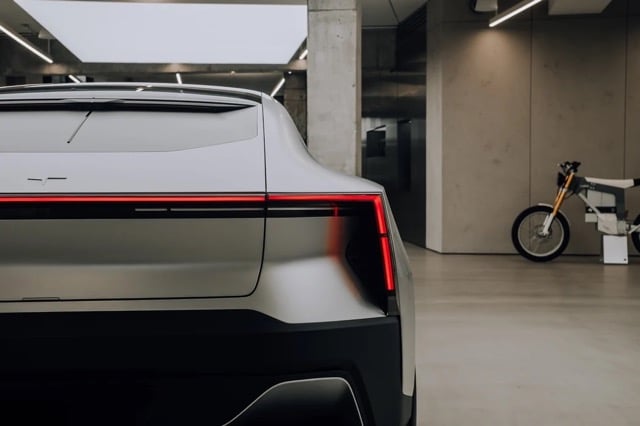The future of the automotive industry is software-centric.
 Photo by Kenny Leys on Unsplash
Photo by Kenny Leys on Unsplash
Google’s Android Automotive Operating System (AAOS) is a specialized operating system designed for cars that allows users to interact with their vehicles in ways they couldn't before. AAOS is a base Android platform that runs pre-installed Android applications as well as optional second and third-party Android applications. It offers openness, customization, and scale to automotive infotainment systems and head units.
Currently there are less than 100 apps available to download from the Google Play Store on AAOS, yet Gartner predicts that by 2028, 70% of vehicles sold will use the Android Automotive operating system. Over the next few years we are definitely going to see a big jump up in the amount of AAOS apps available. Let's go over the different AAOS features and the types of apps we can expect to see. ⤵️
AAOS Features and the Type of Apps They Enable
Android Automotive apps provide a range of features that make a big difference in how we experience driving. Here are the types of apps that these features enable for drivers:
Improved Navigation & Location Data
An obvious feature is navigation, with navigation apps on AAOS like Google Maps and Waze providing accurate and real-time navigation to drivers. They offer turn-by-turn directions, traffic updates, and alternative routes to help you reach your destination faster and more efficiently.
Another use case is for app makers that also have brick and mortar stores. They would be able to provide drivers with navigation to their store directly through their AAOS app. An example of this would be your favourite grocery store AAOS app notifying you that it's time for your weekly grocery haul, and then directing you to the nearest physical location.
AAOS apps will be able to collect the following location/movement data, of course keeping in mind that the collection and use of this type of data is subject to user consent and permissions:
- GPS Data: Includes latitude, longitude, and altitude information, enabling accurate positioning and navigation features.
- Network-based Location Data: Involves using Wi-Fi and cellular network signals to estimate the device's location.
- Sensor-based Location Data: Utilizing various sensors present in the vehicle including the accelerometer, gyroscope, or magnetometer to determine the device's orientation or detect movement patterns.
- Nearby Points of Interest (POIs): This includes data on nearby restaurants, gas stations, hotels, landmarks, etc.
- User-Provided Location Data: Some AAOS apps allow users to manually input their location data, such as home address or their go-to/favourite locations.
Not only will navigation apps benefit from this location data, but so will every other type of AAOS app that we've listed below—this is great data to help app makers understand the locations you frequent, your movement habits, interests, etc. This data can be used to personalize app experiences or provide tailored location-based services.
In-Car Entertainment & Shopping
Of course the most exciting feature is entertainment. Driving wasn't previously considered as an opportunity for entertainment, however this is what the future of driving is moving towards—an experience where you can consume different media and shop, similar to scrolling on your mobile phone, however with added implications for driver safety.
Drivers will be able to interact with the following forms of content, directly from the infotainment system in their vehicle:
Audio
- Music streaming apps—Listen to your music and playlists through Spotify, Apple Music, etc.
- Podcast apps—Listen to shows and episodes through Stitcher, Pocket Casts, Google Podcasts, etc.
- Radio apps—Access live AM/FM radio stations, internet radio, and digital radio services. Users can listen to music, news, talk shows, and sports broadcasts through these apps.
- Audiobook apps: Listen to audiobooks through Audible, Google Play Books, or Librivox.
Video—Stream video content like TV shows, movies, vlogs and more through apps like YouTube, Netflix, Amazon Prime Video, etc.
Interactive Gaming—Gaming apps are being introduced and are optimized for the infotainment system's screen.
Shopping—In the future you'll be able to complete purchases from the vehicle, including purchases through your favourite online retailers, grocery and food delivery apps, travel and ticketing apps, marketplace apps and more.
It's important to note that only audio apps are accessible while driving, video, gaming and shopping apps will only be accessible while the driver is in a parked state. This is necessary for driver safety, app makers will have to ensure compliance with Google's design and development guidelines. Something that app makers can consider is offering two different experiences for their AAOS app, one that is hands-free and enabled through audio and voice commands while the user is driving, another that is more interactive for when the user is parked—again this depends on the type of app and content they provide to users.
Other Features to Note
Communication and Notifications—Safety is an important feature of AAOS; Google's design and development guidelines ensure that driver safety is at the forefront of all in-car apps. Under these guidelines, users will be able to access and interact with apps hands-free through voice commands. Messaging and communication apps like WhatsApp allow you to send messages and make calls hands-free. This feature also extends to all other types of AAOS apps, allowing them to send audio notifications and communicate with the driver to facilitate actions in the app through voice commands.
Integrations With Other Devices and Systems—Picture this, you're driving home and your smart home app on AAOS turns on the lights, adjusts the temperature, and disables the security alarm for your arrival. As app makers extend their app to AAOS, the cross-platform user experience will integrate AAOS apps with other apps, devices, and systems outside of the vehicle. Some notable integrations to mention are smart home apps, wearable devices, and IoT systems—these would benefit from having an integrated AAOS app as it enhances the user experience, extends functionality, and enables seamless interactions across different platforms.
Example of App Makers Partnering With Automakers
Pre-installed AAOS apps are starting to see a rise, built by app makers in partnership with automakers. An example of this is Polestar—a niche electric vehicle OEM that was one of the first to adopt AAOS in its vehicle lineup. Their system includes AccuWeather and EasyPark apps, both as a result of collaborations.
Polestar & Accuweather—They collaborated to build one of the first weather apps on Android Automotive. The app provides information about hourly and daily weather with respect to your location and provides weather alerts for the area. TribalScale worked with AccuWeather to build this application that translated their digital strategy while also complying with Google's guidelines, you can read more about this project here.
Polestar & EasyPark—They collaborated to build an integrated version of EasyPark's parking app. The preloaded software makes it possible to pay for parking without a parking meter or smartphone. And because it's designed to work with the Polestar 2, EasyPark will stop your parking payments as soon as you resume your journey.
As Android Automotive continues to see wide adoption from virtually all the major automotive OEMs (including Ford, Nissan, Volkswagen, Mitsubishi, and many others), we'll see OEMs form more of these partnerships with app makers to add unique pre-installed AAOS apps to their vehicles.
Final Thoughts
The future is looking bright with companies eager to jump on the automotive development bandwagon in coming years. It’s only a matter of time until both the community and ecosystem mature enough to become a serious force for enabling mobile development on yet another front: the car. If that’s the case, the ecosystem will inevitably expand.
App makers should consider the following:
- How can you leverage location and movement data to personalize the app experience?
- What type of content does your app offer and how interactive is it?
- What kind of in-car experience does your app translate to?
- Would you be able to offer a hands-free experience enabled through voice commands?
- Is there a way that your AAOS app could integrate with your other apps/devices/systems?
Looking for an AAOS Development Partner?
TribalScale designs and builds custom AAOS apps. Our Android-specialized engineers have extensive knowledge on Google’s AAOS development guidelines, ensuring compliance and quality.
Have any questions about your AAOS strategy or TribalScale's AAOS development capabilities? Click here to book a call with one of our in-house AAOS experts.

Sehrish is an Agile Software Engineer at TribalScale working on innovative and futuristic Android apps. She has a Master's degree in Computer Engineering and is greatly passionate about working on the UI side of Android. Alyssa Berbecaru is the Digital Marketing Operations Specialist at TribalScale, focused on researching the strategy and business benefits of AAOS.


